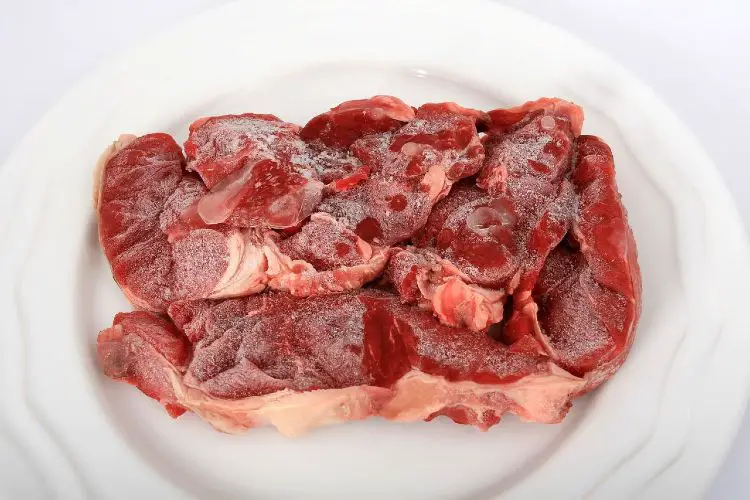Design: The Human Interaction That Animates Objects and Ideas
I was fortunate enough to go to a school in Oxford with a competent ceramics department, somewhat of a rarity in the UK these days. I remember being fascinated by the process of transforming a lump of soft, wet clay into a considered three-dimensional ceramic form that could be functional and hand held. My interest in the variety of processes and the control one needs to utilize them has stuck with me from then, at the age of thirteen, to the present day via the structure of my GCSE’s, A Levels, Art Foundation, the Ceramics BA I undertook at Camberwell College of Art and Design and two pottery apprenticeships.
I have always been drawn to a simple, pared back aesthetic and so my work has naturally adopted this approach to design. The objects I make are thus stripped of any superfluous detail and left with what I feel is necessary to characterize each functional piece. I developed my core range of ceramics whilst working as Julian Stair’s apprentice from 2007-2011. Prior to that I assisted Lisa Hammond whose work had a rustic, somewhat gestural feel to it. Although Lisa’s work is very well considered and assertive, it felt opposed to my natural inclination and I struggled to embrace the approach. I joined Lisa for one year upon graduation from Camberwell in 2006.
For my degree show I produced a body of work, which although sculptural, referenced a highly finished, functional aesthetic. I was using heavily grogged clays resulting in textured surfaces, so in part my current work responds to the fine properties of porcelain. I do believe, however, that if I worked in another (ceramic or non-ceramic) material that the object would conspicuously share the same design logic and characteristics of my porcelain tableware.
The work of Japanese ceramicist Ikuko Iwamoto, who is based in London, positively intrigues me. Her work is exquisitely detailed and skillfully executed – some of the most unique ceramics I have ever seen. Julian Stair’s pottery is beautiful too. I learned a huge amount working as an assistant to Julian; he is a generous teacher whose skill, ambition and scholarly approach to Craft, Art and Design I greatly admire. I am interested in manufacture too and very much enjoy using my small collection of Branksome China. Some of their designs have been in production for over forty years and embody good, classic design. Sadly, having been established in 1945, Branksome have now decided to cease manufacture – a great loss to British ceramics.
My current work is of thrown and glazed porcelain. The transparent glaze I use enhances the inherent whiteness of the porcelain whilst adding a robust glossy surface. I use porcelain because of its density and strength when fired, the purity of its colour and ability to enhance form. I have taken these characteristics and applied a generosity of material and form ensuring that the objects are durable enough to cope with the demands of habitual use. My aim is to combine a clarity of design with the nuances of making by hand. In essence, my signature look was born of an innate concern of form and function.
It is fair to say that pottery is often seen as a solitary and contemplative experience, however, that is not necessarily the case. Success is born of hard work and consistency and in order to progress in a competitive environment I have to fulfill various roles. Designing, making, marketing and selling all need constant attention and although I do not currently employ any assistance, my studio can feel very busy! One of the great strengths of the Cockpit Art studios, where I work, is the network of support that exists; from the makers to the professional development staff, you are never far from company.
I think people initially respond to objects and ideas from an instinctual point of view. Tactility, however, plays an important role in the development of one’s appreciation for a three dimensional form. Take a simple everyday object such as a mug for example: it is a vessel that contains a volume. It has an interior and an exterior, a base, a foot, a handle and a rim. The wall is of a certain thickness, and so the mug is of a certain weight. It could be cylindrical, oval, square or even triangular in form. Is it symmetrical? Does it have a curved or straight-sided profile? Is it coloured, patterned, rough or smooth? Only when you start to unpick an object do you realise the multifaceted nature of designing, making and handling functional objects. It is my intention to highlight each and every one of these elements in an attempt to invigorate my audience’s perception of the objects they surround themselves with.
Design and craft serve different purposes to different people but I do not set out to impose what its ‘function’ should be. Although I am passionate about making objects that encourage a physical response, I do not insist that my ceramics should be used – I certainly encourage it, however. Some collectors purchase my work because they admire its handmade design and contemplative qualities whereas others are keen for the work to play a more integral role in their daily routines. I use my work regularly and take great joy in doing so. It is the best means of furthering my understanding of how it feels in use and whether it fulfills the intended function.
Design is not only about products but people too; it is human interaction that animates objects and ideas. Exhibitions, fairs and open studios are all good occasions to meet collectors, curators and retailers. I appreciate the opportunity to discuss my work and am keen to share my influences and ambitions. Increasingly so, consumers are becoming more interested in the narrative behind the design and the craftsmanship that has produced it. Although we are in a time of austerity, I believe that consumers are willing to invest in design that is made to last.
One of the great highlights of my career so far has been meeting Priscilla Carluccio at Julian Stair’s studio shortly before she opened her Few and Far shop in 2008. An initial order of six sets of Stacking Mugs flourished into an array of exciting opportunities and friendship. Priscilla kindly invited me to take part in and curate ‘Billy Lloyd and Friends’ in 2010 and more recently I made ‘An Edition of Fifty Mugs.’ The mugs were each of unique design and for sale individually, however, Vicky Conran purchased the whole set for Terence Conran’s Christmas present. In the New Year I received a letter from Terence in which he expressed his delight at being given the collection. I was equally delighted to have shared this moment with Priscilla and consider her a friend, mentor and true champion of craft.
Some exciting projects lie on the horizon: I am designing and making a range of tea ware in collaboration with Lalani and Co, a boutique tea trading company based in London, specializing in some of the world’s finest and rarest teas. The range will be twinned with particular teas expertly selected by Jameel, Nadeem and AK. I have also been commissioned by SE5 Architects to produce approximately two hundred porcelain pendant lights for two new residential buildings in Grove Park, Camberwell. Like the ‘Edition of Fifty Mugs’ I made, each one hundred pendants (per household) will be of unique design. Lighting is a new departure for me but one I have been interested in pursuing for sometime. Due to the cyclical nature of a maker’s practice it can often take a commission to kick-start ideas and generate new work. Aside from making, I am also collaborating with Julian Roberts of Irving and Co in the development of my graphic identity.
If I were to give advice to anyone interested in becoming a ceramicist, I would say be ambitious. Whether it is the amount you set out to achieve in your day, year or career, you should aspire to innovate high standards of attainment, but do be pragmatic. A prompt (yet patient) and positive attitude is needed when negotiating retail and exhibition opportunities. This process can take time and you must try not to get too caught up in other people’s (or businesses or organizations) careers or agendas, which can be a negative distraction. Instead, focus on your own. In doing so, opportunities will become apparent both realistically and conceptually. Learn to be a competent and effective communicator across a variety of mediums and get to know other designers and makers whose work you respect. Don’t be afraid to make mistakes, sometimes learning the hard way is the best way! It is important to make a concerted effort when displaying your work for exhibition: consider its relation to your work – it should enhance not overwhelm. Most of all, you must remember that ultimately your work should speak for itself. There will be many times when your skill will be judged without your presence. If you haven’t spent enough time really getting to know your craft, you have compromised your ability and lost track of what you set out to do in the first place. By the way, what is it you’ve set out to achieve?
Further Information
Billy Lloyd: www.billylloyd.co.uk
Follow Billy on Twitter: @billyloydesign
Facebook: www.facebook.com/billylloydceramics


